藏汉青年交流小记 Notes on Tibetan-Chinese Youth Dialogue
迎接冲突和被激怒才是我们来的目的,一些官样文章不能发出来的话。To face conflict and be provoked — that was the point of our coming. Some official scripts didn’t make it out.
On the afternoon of March 28, 2025, the Office of Tibet in North America, under the Central Tibetan Administration, organized a Tibetan-Chinese youth dialogue at the Tibetan Association of Northern California (TANC). The discussion touched on topics such as Sino-Tibetan relations, overseas democratic movements, and the current state and future of ethnic rights. In reality, the dialogue did not delve deeply into these grand themes—many issues were only briefly addressed, and there was often not enough time to clearly articulate viewpoints. Despite a mutual willingness to understand each other, genuine communication remained difficult due to the language barrier.
Tsultrim Gyatso, the Chinese Liaison Officer at the Office of His Holiness the Dalai Lama in North America, played a unique role at the event. I later learned that similar Chinese liaison positions also exist in Europe, Australia, Japan, and Taiwan, highlighting the Central Tibetan Administration's emphasis on dialogue with the Chinese community.
Within Chinese circles, events organized by Tibetans are relatively rare. I mostly met my Tibetan friends during protests on the streets, and even with familiar companions, there are few opportunities to sit down and have a real conversation. At a time when Tibetans inside China continue to face suppression, gatherings like this one are especially valuable.
At the start of the event, Tsultrim Gyatso, who had traveled from Washington, D.C., delivered opening remarks and moderated the entire session in both Tibetan and Chinese. The atmosphere was warm and sincere, with both Tibetan and Chinese participants showing exceptional friendliness.
Communication Breakdown
The entire event left people wanting more. Both sides wished to express themselves, yet tiptoed around each other’s perceived “red lines,” treading cautiously and avoiding core issues. As my view, some Han participants came across as ignorant or brash, while some Tibetans were overly polite and restrained. Whenever discussions approached anything substantial, silence would fall, or the conversation would be steered toward food.
There was also a jarring language gap: among the Tibetan participants, some in exile spoke only Tibetan and Chinese, while those raised overseas mostly spoke Tibetan and English. On the Han side, many spoke only Chinese or very basic English. No matter which language was used, someone was always left out. This made it nearly impossible to engage deeply when the conversation turned to ethnic identity or ideology.
The language divide was startling. Many older-generation Tibetans had limited English but spoke fairly fluent Chinese. One middle-aged man, speaking excitedly in accented Mandarin, exclaimed, “Han people today are brainwashed—they think we’re backward, poor, uncultured! If they truly knew Tibetans, they wouldn’t think that way.” I’d heard similar sentiments inside Tibet—but never spoken with such volume or urgency.
Tibetans born in India or the Western world often speak English with a fluency that rivals native speakers. When they articulate issues such as Indigenous rights, land justice, and racial identity, they do so using terms that many Han Chinese have never even heard of—even those with a solid education. Ethnic issues remain among the least discussed topics in Chinese political discourse, and the vocabulary to describe them is often “borrowed” from the American civil rights movement or Taiwan’s Indigenous movements.
The Tibetan plight is something unfamiliar—an unformed concept that has never been concretely examined. When we begin to discuss the issue of Tibet, I find myself having to “borrow” word from the struggles of distant peoples across the oceans, because I lack the imagination to describe what “new words” our old neighbor now uses to recount old their sufferings.
Here for the Anti-CCP Cause
During the Q&A session, a Han Chinese youth took nearly two full minutes to ask his question. 🙋
(This is a condensed summary—feel free to comment below if you think it needs improvement.)
Q: Do most Tibetans actually want independence? How are we, as Chinese people, supposed to help you? If China democratizes one day, but then you seek independence, a lot of Chinese people might not accept that. So what is it that you really want—Tibetan independence, or just freedom?
A: There’s a diversity of views among Tibetans. The current official position of the Central Tibetan Administration is the “Middle Way” approach: seeking genuine autonomy—religious freedom and self-governance in all areas except foreign affairs and defense—within the framework of the Chinese state.
Tibetans don’t all agree on this. Some organizations, like the Tibetan Youth Congress and student groups, continue to advocate for full independence. We also have a parliament in exile that gathers and reflects the range of opinions within our community. The differences in our aspirations—independence or autonomy—don’t stop us from standing together in our daily work for Tibetan rights and freedom. These questions of ultimate status will have to be discussed one day, when we are finally free to return to our homeland. That conversation will have to happen not just among Tibetans, but also with the Chinese people.
(He later followed up with another question)
Q: "All of us here oppose the Communist Party. You Tibetans have more experience in this regard. Do you have any good strategies or suggestions for us? Maybe we can work together to overthrow the CCP!"
Tsultrim: "We Tibetans don’t really know of any good methods. Our population is much smaller than yours—only about six million—and most of our people are still under strict control inside Tibet. Honestly, we don’t have much useful advice."
I replied: "In today’s China, the Han are the ruling majority. If Han people broadly supported the Tibetans, the Tibet issue would naturally be resolved. Opposing the CCP is a task for the Han themselves—you cannot expect Tibetans to do it for you."
Afterward, I asked a Tibetan friend whether she had felt offended at any point during the event.
She said, “I felt offended every single minute.”
After a few seconds’ pause, she smiled and added, “But isn’t that the whole point of organizing something like this?”
I took a deep breath, feeling slightly ashamed. Without dialogue, future China may see tens of thousands more people like this—carrying even deeper misunderstandings. The Han Chinese who showed up were already pioneers in initiating conversation. The views of the broader public might be far worse.
I’m Not Obligated to Host You
During the panel discussion, a Han participant asked:
“What do Tibetans generally expect from us Han Chinese? How can we help improve the situation for Tibetans, or join in your movement?”
A Tibetan student from India responded thoughtfully. He said he understood Chinese people’s concerns—in his case, attending this event didn’t involve much risk, but for Han Chinese, showing up could indeed be risky. He suggested starting small: take your Han Chinese friends to Tibetan restaurants, introduce them to Tibetan culture, and gradually help shift their perceptions.
After the event, a Han friend of mine—someone who never really cared about politics—told me she had a sudden realization in that moment:
“Wait… I’m taking a big risk just by being here?”
It hit her all at once: maybe she was doing something truly risky.
Then Sonam, who grew up in the U.S., said bluntly:
“You Han Chinese took our land, killed our people. Why should I take you out for Tibetan food? We are under no obligation to host you.”
The Han participant who had asked the question was taken aback. The contrast in perspectives between Tibetans from different backgrounds—one warm and accommodating, the other cold and furious—was like fire and ice.
Also in attendance were June Fourth Massacre survivor Fang Zheng, Zhou Fengsuo, Executive Director of Human Rights in China, myself, and Kunjo Tashi, President of the Tibetan Association of Northern California (TANC)—along with over thirty young Tibetan and Han participants, some from the Bay Area and others who had traveled from as far as San Diego in Southern California.
Tsultrim Gyatso spoke candidly, saying the purpose of this dialogue was to break down barriers—so that more Chinese people could understand the real situation in Tibet, and so that Tibetans, too, could hear Han Chinese perspectives. He hopes that through exchanges like this, there will be fewer misunderstandings and more mutual understanding, laying the groundwork for future cooperation on concrete initiatives.
During the event, TANC President Kunjo Tashi shared that approximately 5,000 Tibetans live in the East Bay area near Richmond. The association has been active for nearly 35 years, working tirelessly to preserve the Tibetan language and culture. Every weekend, they hold Tibetan language classes that also teach music and cultural traditions, as a way to resist the erasure of heritage occurring inside Tibet.
He made a point to emphasize:
“We Tibetans do not hate the Han people. What we oppose is the Chinese Communist regime that oppresses us—not the Chinese people themselves.”
I shared the intention and journey behind founding the Chinese Youth Stand for Tibet initiative. I said, “If there is one person who could serve as a bridge between Han and Tibetan communities, it could be me.” I spoke about my past work at a school in the Tibetan region of Qinghai, which was later shut down by the Chinese Communist Party. That experience pushed me to shift from a cultural advocate to someone more actively engaged in political and ethnic rights work.
“The CCP’s authoritarianism and ethnic hatred are both our enemies.”
I urged the Tibetans present to share more of their and their families’ stories of exile with Chinese people:
“For many Chinese, today might be the very first time they’ve heard a Tibetan voice. Many Chinese are only now beginning to escape China, while Tibetans have been walking the road of escape from authoritarianism for 65 years.”
Several Chinese youth at the event also shared their own experiences and reflections:
Cui, born in the 1980s, said that his previous impression of Tibet was limited to CCP propaganda posters. He had no understanding of the oppression Tibetans face. He observed that many Chinese pro-democracy activists are divided over the CCP’s narrative of “Tibetan separatism,” which has prevented real unity in opposing the regime. He expressed deep concern: “What will happen to China after the CCP collapses?”
Mr. Xu, a Han Chinese who was born in the Amdo Tibetan region, recalled how local schools had long adopted Mandarin Chinese as the only language of instruction. Tibetan language had been pushed to the margins. Many Tibetan children had adopted Han names—or even claimed Han ethnicity—to avoid state scrutiny. He noted that under CCP rule, Tibetan language, culture, and identity are quietly disappearing: “This is a silent cultural genocide.”
Ms. Fang, who had flown in from San Diego just to attend the event, said she felt she had absolutely made the right decision:
“Even though I don’t know much about Tibet, I’ve always supported the Tibetan people’s pursuit of freedom and democracy. Hearing Tibetans tell their stories first time and today was a rare and powerful experience—it made me reflect on what we, as Chinese people, can do.”
She added: “Sometimes I feel guilty. I realize I know so little, and I don’t understand Tibetans well at all. But even so, they were still incredibly kind to me.”
Luo, a young man from the South Bay, told The Epoch Times that it’s usually very difficult to gain direct insight into the real lives and struggles of Tibetan people, and that this event offered a rare and valuable opportunity. He felt that many people in China find it hard to understand Tibetan culture and demands, which is why he sees it as his responsibility to take the initiative to learn about them.
In the second half of the gathering, Tibetan and Han youth broke into smaller groups for deeper discussions—sharing their perspectives and stories on topics ranging from language and education to history and the experience of exile. The four-hour exchange was vibrant and engaging, with many participants saying they learned a great deal and were eager for more dialogues like this in the future.
After the discussion, our Tibetan friends invited us to attend a cultural celebration for the Dalai Lama’s birthday. Following a series of religious ceremonies and traditional music and dance performances, everyone gathered in a large circle on the stadium field to dance the Tibetan circle dance, “Toe-Shey .”
When a Gorshey dance song suddenly cut off mid-play for some unknown reason, people were briefly disappointed—but no one complained.
Instead, they simply started singing together and kept the dance going, as if nothing could hold them back.
The latter part of this article incorporates portions of the April 4 report and photos by The Epoch Times journalist Xue Mingzhu: Tibetan-Chinese Youth Dialogue Held in Bay Area to Safeguard Culture and Freedom.
Written and Video by: Ginger Duan
Photos: Koala, Xue Mingzhu
Proofreading: Iris ChatGPT
Translate: ChatGPT





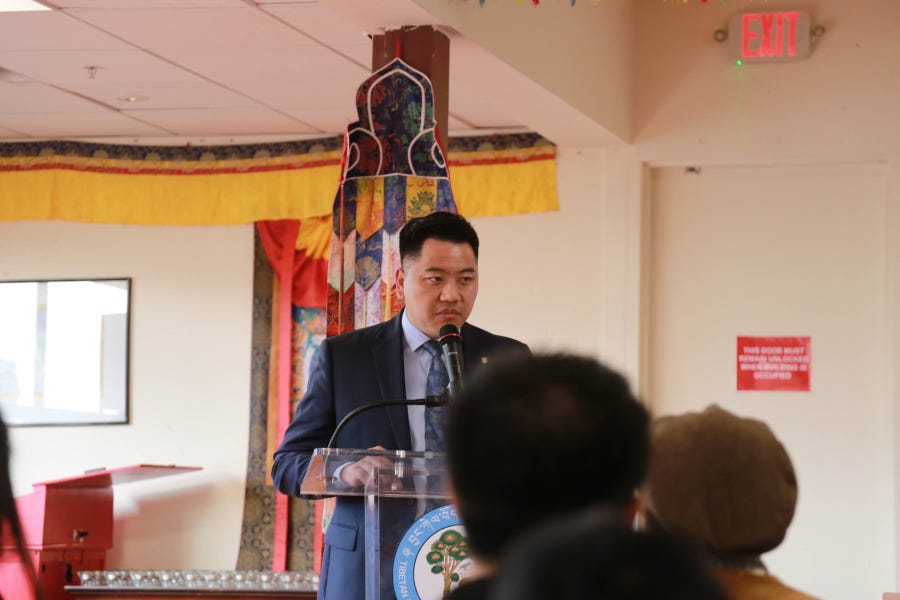
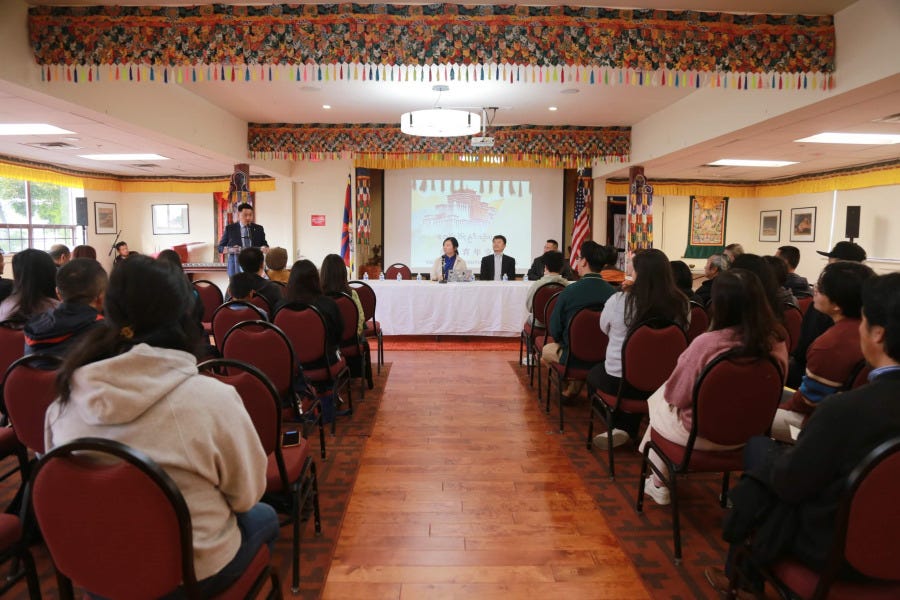
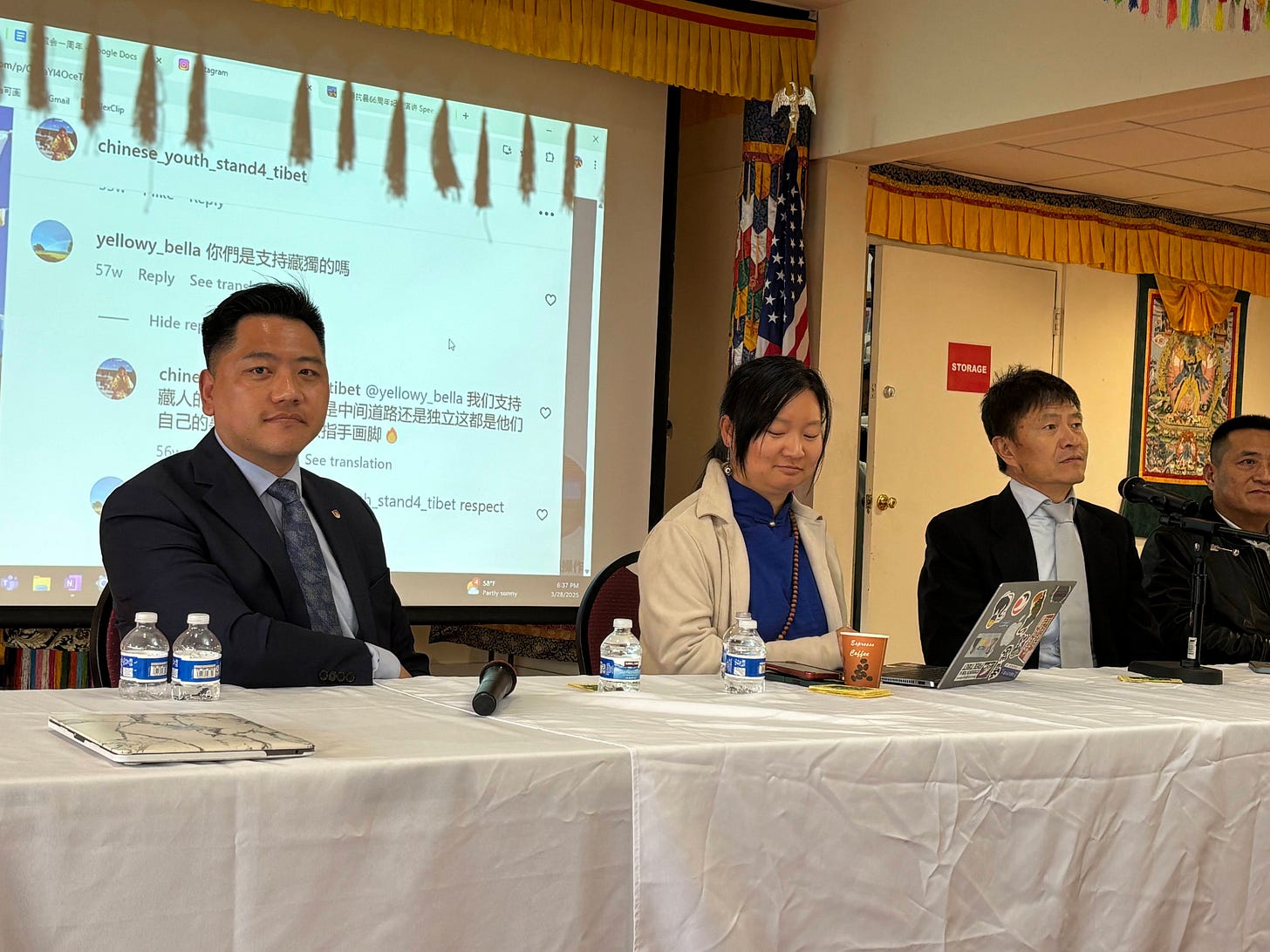


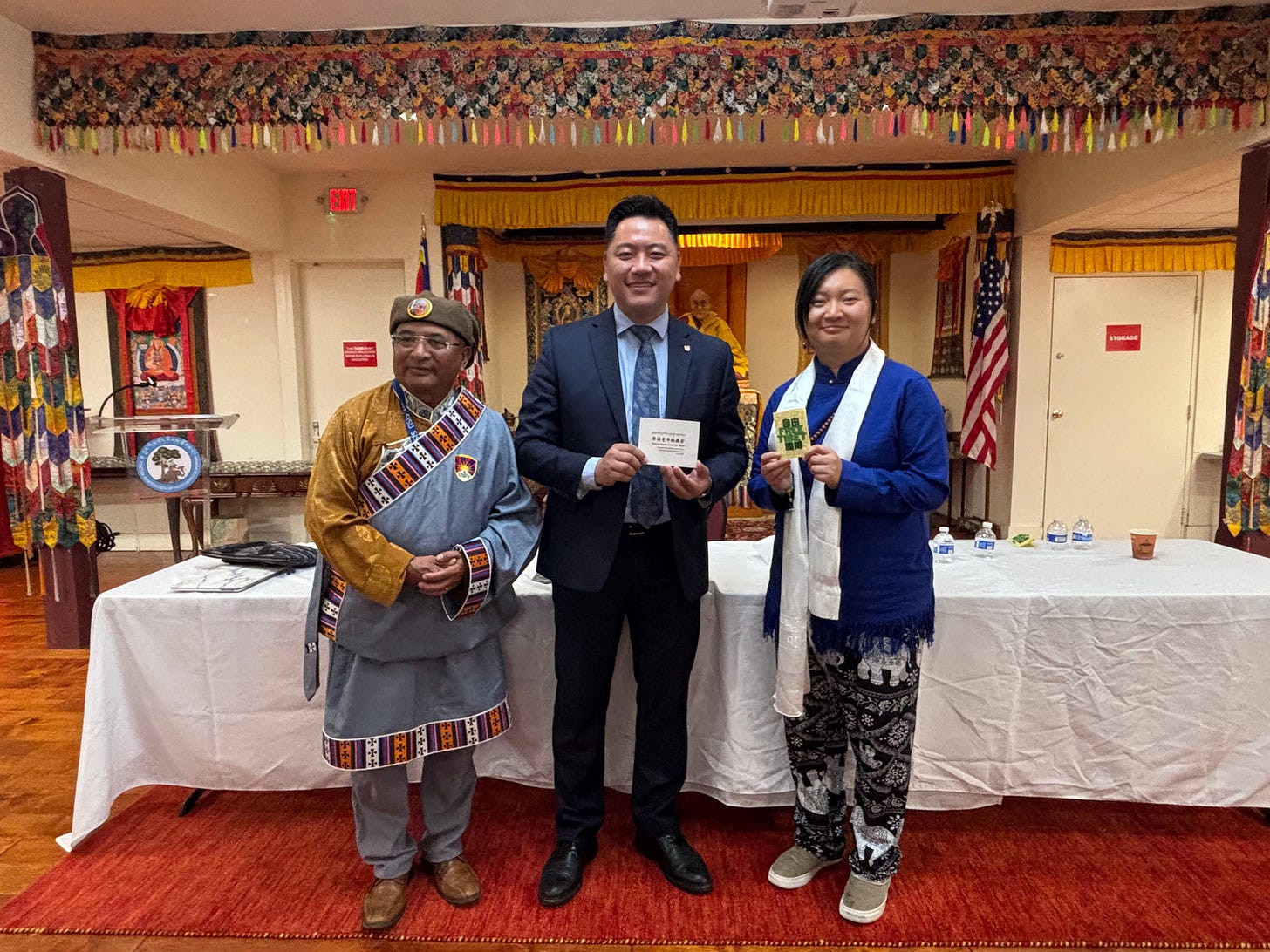
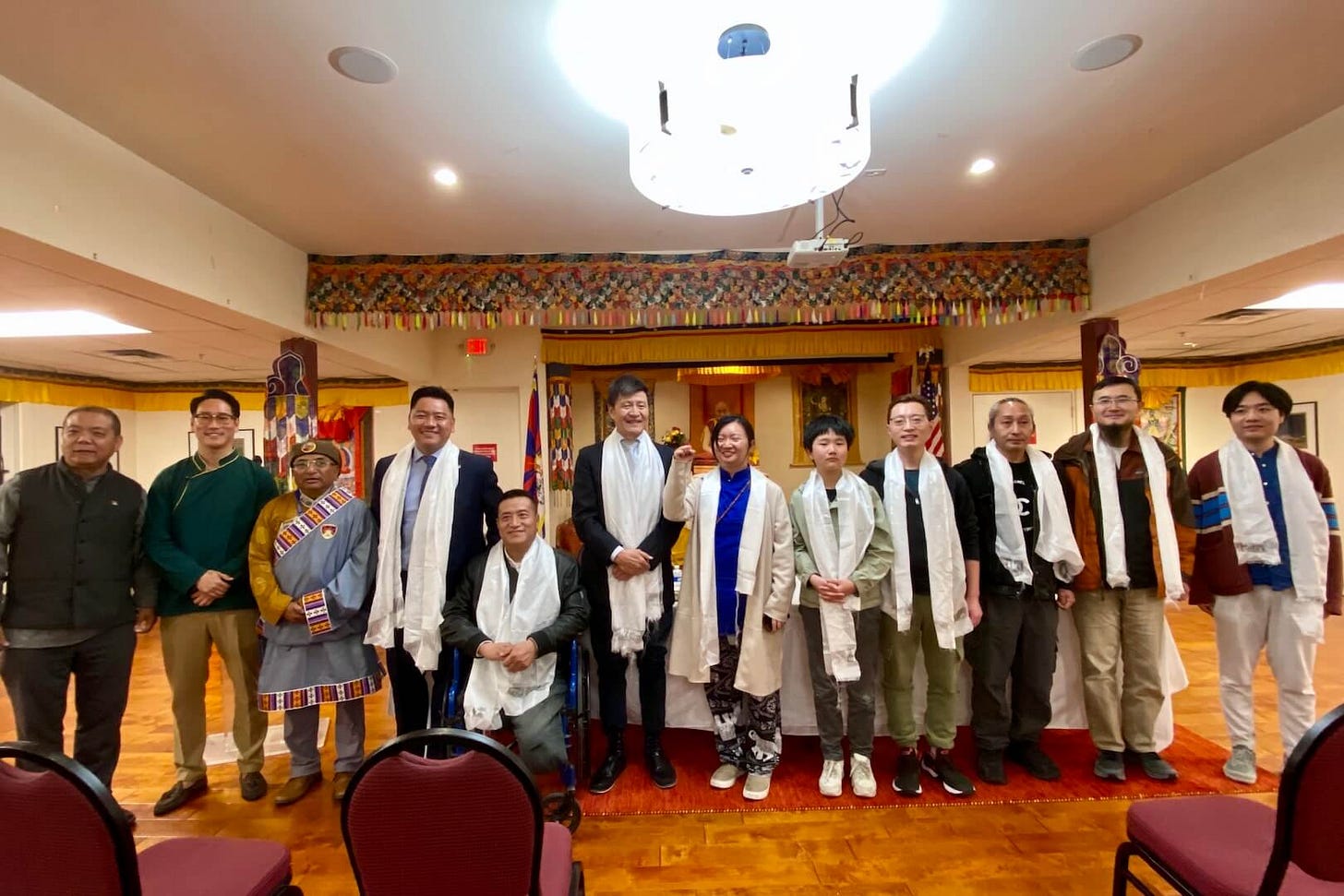
Recently I gave a lecture at a university in Taiwan and I was happy to two students from China, but I was also bit worried about them attending my lecture might cause them trouble. One student was very upfront to express his opinion and language was issue, but we managed to communicate.